Best Thermal Paste for CPUs 2025: Over 50 Compounds Tested and Ranked
The right thermal paste will improve performance.
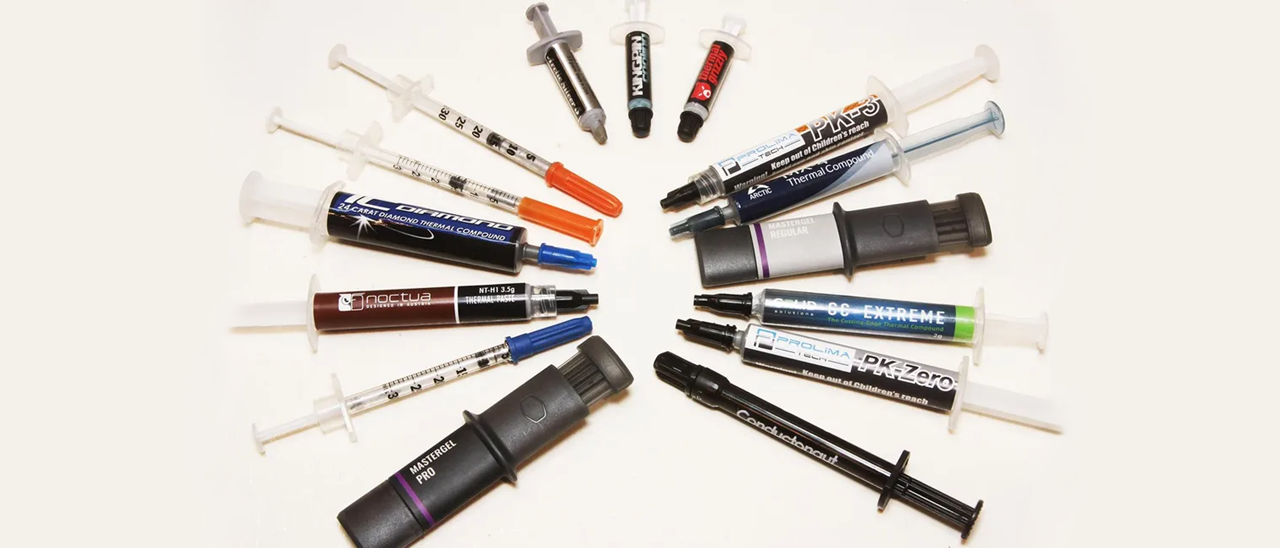
Choosing the best thermal paste may sound simple, but a dizzying array of options can turn this seemingly easy choice into a time-consuming and confusing task. Thermal paste is designed to minimize microscopic air gaps and irregularities between the surface of the cooler and the CPU's IHS (integrated heat spreader), the piece of metal built into the top of the processor, to transfer heat to the CPU cooler.
Good thermal paste can have a profound impact on your performance because it will allow your processor to transfer more of its waste heat to your cooler, keeping your processor running cool. Choosing the best thermal paste is also important if you plan on overclocking your rig to its fullest. Even the best CPUs for gaming can often hit slightly higher CPU overclocks if paired with a good thermal paste.
Performance enthusiasts often swear by a favorite brand of paste, but new recipes crop up fairly frequently. We've extensively tested some of the top thermal pastes on the market. If you're hunting for more exotic pastes off the beaten path, we also have plenty of historical data below covering 90 different pastes (and yes, we've even tested toothpaste).
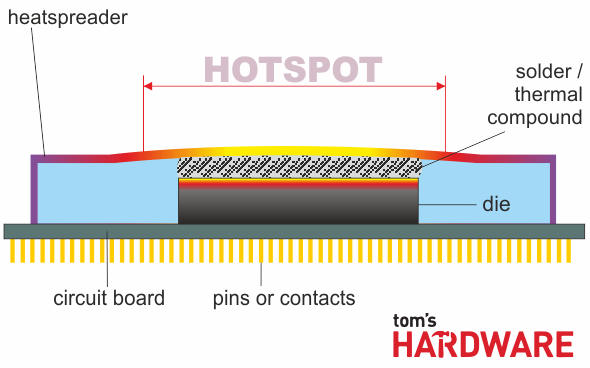
Thermal paste goes by many names, such as "thermal compound," "thermal grease," or "TIM" (Thermal Interface Material), but they all have the same purpose — to help keep your chip cool by ensuring that heat passes efficiently from the CPU to the cooler.
Most pastes are made of ceramic or metallic materials suspended within a proprietary binder, allowing for easy application, spread, and cleanup. Depending on their specific formula, these thermal pastes can be electrically conductive or non-conductive. Electrically conductive thermal pastes can carry electricity between two points, meaning that if the paste squeezes out onto other components, it can cause damage to motherboards and CPUs when you switch on the power. A single drop out of place can lead to a dead PC, so extra care is imperative.
Liquid metal compounds are almost always electrically conductive, so while these compounds perform better than their paste counterparts, they require more focus and attention during application. They are very hard to remove if you get some in the wrong place, which would fry your system. In contrast, traditional thermal paste compounds are relatively simple for every experience level. Most, but not all, traditional pastes are electrically non-conductive.
Even though a dizzying array of different thermal pastes are available—some blends have been around for over a decade—new formulations still come to market at a surprising pace. As new pastes arrive, older pastes also retire.
We're also putting a new take on an old approach to the test — thermal pads. These pads can be used as a thermal paste and come as a single sheet you simply apply to your heatsink, with Thermaltake's Heilos Pad being the first new thermal pad entrant to see our test bed in the coming weeks.
Here are the best thermal pastes, along with our complete test results. Remember that you don't always get what you pay for as some budget pastes come awfully close to or overtake their more expensive competitors.
Best Thermal Paste for CPUs You Can Buy
Why you can trust Tom's Hardware
Best Premium (Standard) Thermal Paste
Best Premium (Standard) Thermal Paste
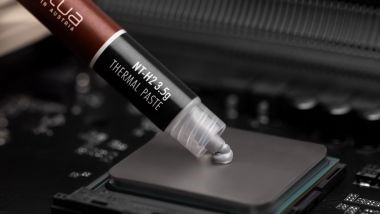
1. Noctua NT-H2
Specifications
Reasons to buy
Reasons to avoid
While many of Noctua’s products carry premium price tags, like the NH-D15 G2 Air Cooler, when it comes to thermal pastes, Noctua’s NT-H2 carries a relatively “budget” price tag of only $12.95 for a 3.5G tube that also includes three cleaning wipes. Its thermal performance was very good. While it didn’t take the top-ranking position in our charts, it was a negligible 0.3C away from the best result in our air cooling test system.
Best Premium Thermal Paste (Runner Up)
Best Premium Thermal Paste (Runner Up)
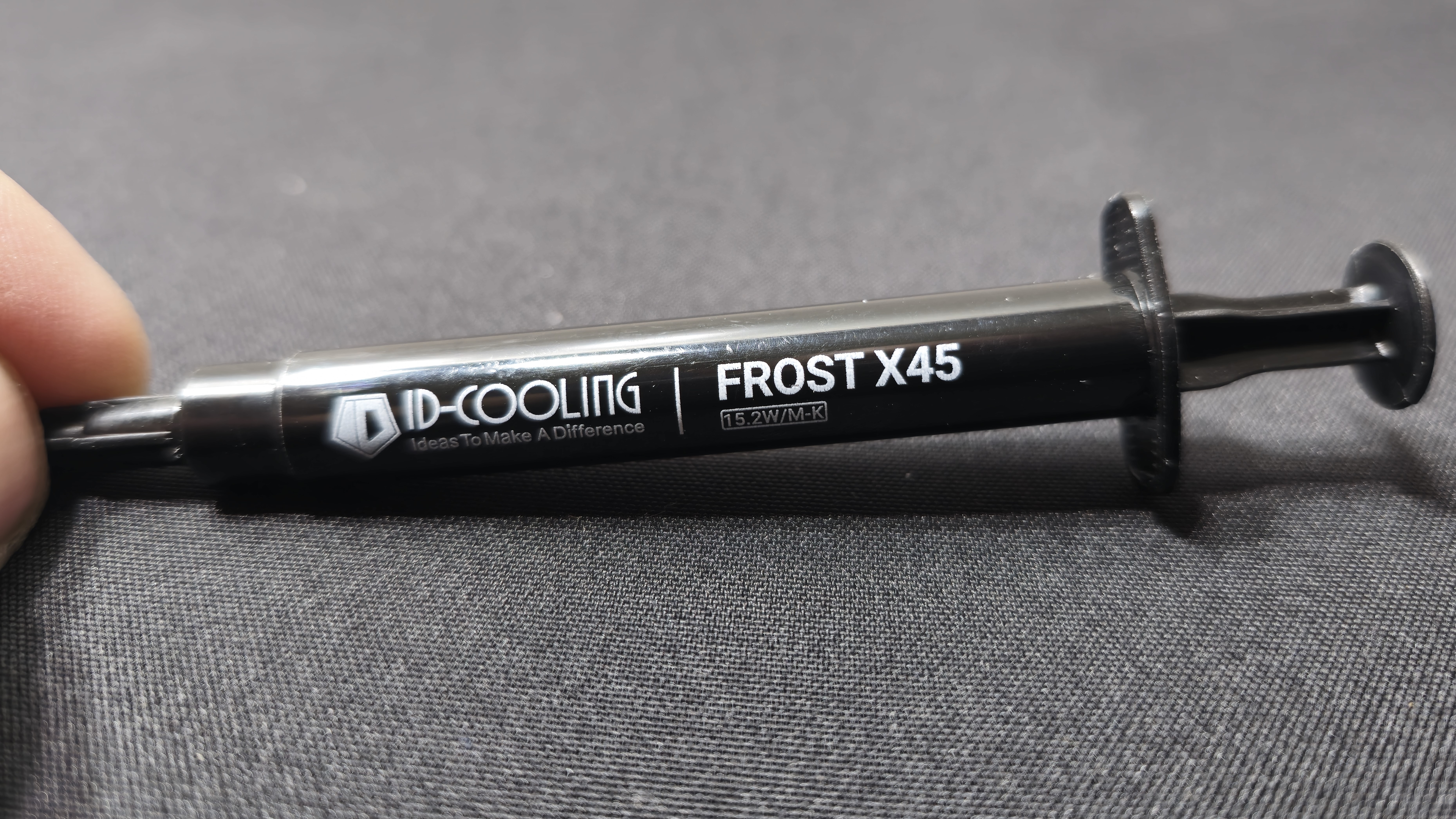
2. ID-Cooling Frost X45
Specifications
Reasons to buy
Reasons to avoid
ID-Cooling’s Frost X45 is the best-performing thermal paste we’ve tested on our air cooling system, hands down. The biggest downside is its availability: This is a newly launched product, and currently, the only way to obtain this thermal paste is to purchase one of their newest AIOs, like the budget $60 FX360 Pro. However, it should be on storefronts like Amazon and Newegg (see Newegg promo codes) in the near future.
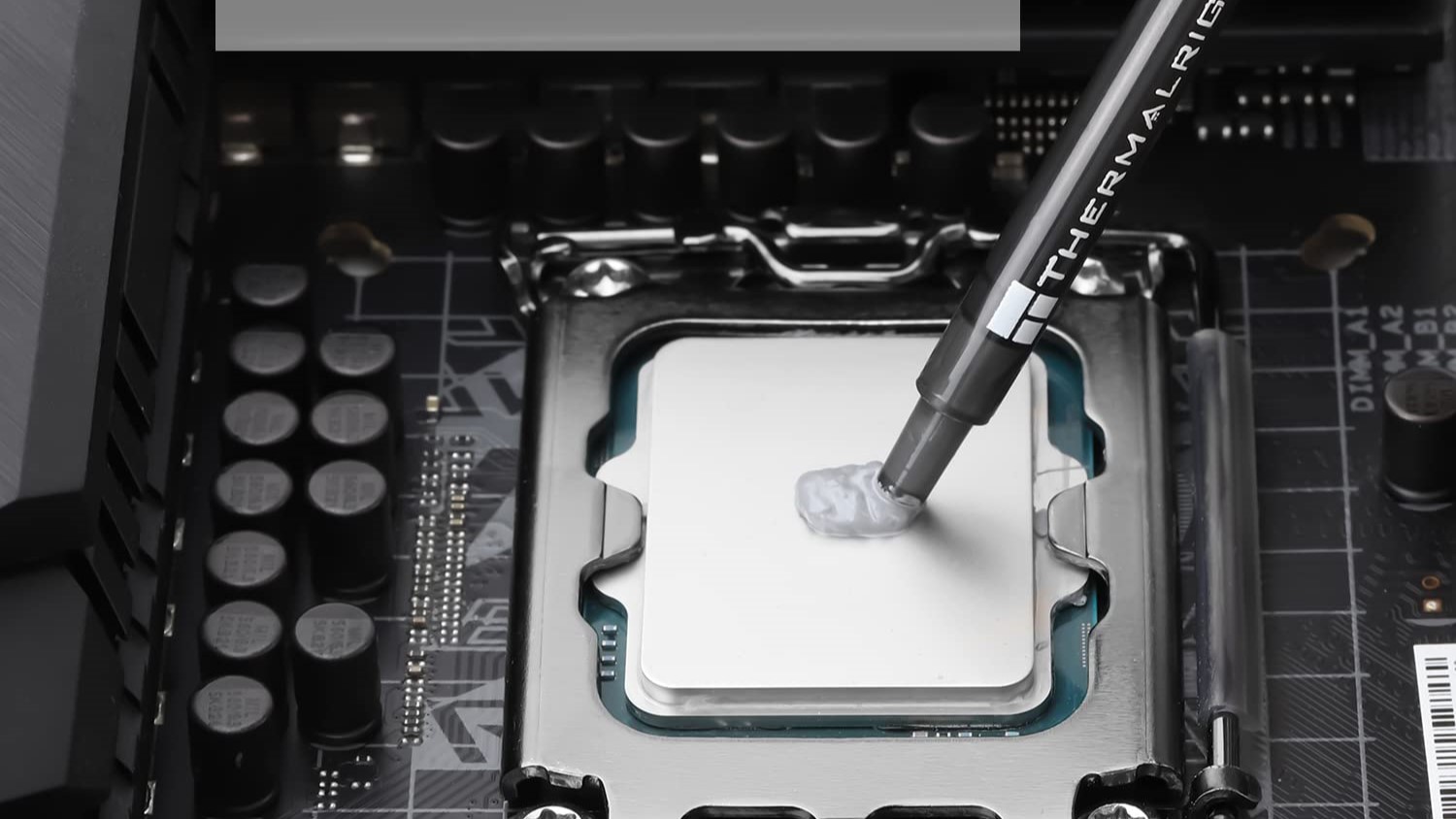
3. Thermalright TF-9
Specifications
Reasons to buy
Reasons to avoid
Best Thermal Pad
Best Premium Non-Standard Compound
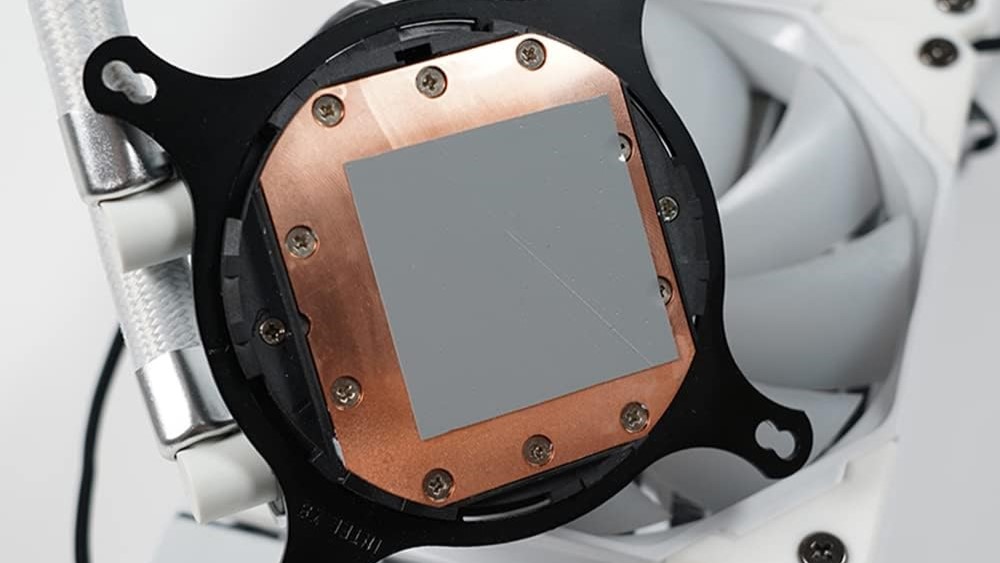
4. Honeywell PTM7950
Specifications
Reasons to buy
Reasons to avoid
Honeywell’s PTM7950 is a thermal compound like no other— this thermal pad changes from a solid to a liquid upon applying heat and pressure. With our air cooling results, PTM7950 had the best results of any non-liquid metal compound. Its primary downside is longer burn-in times. We recommend giving it a strong thermal test after application to ensure you're getting the best results.
Best Thermal Pad (Runner Up)
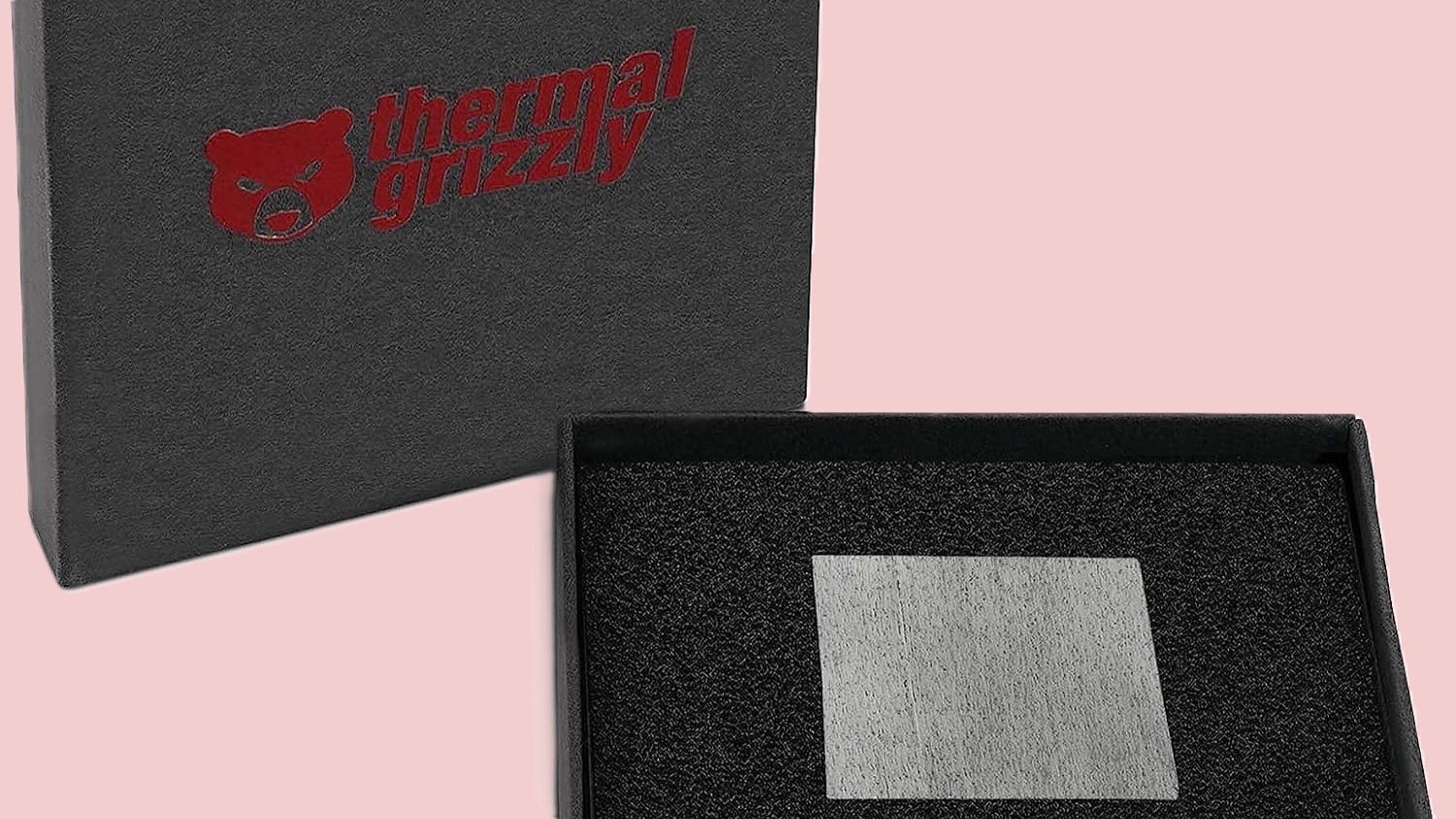
5. Thermal Grizzly Kryosheet
Specifications
Reasons to buy
Reasons to avoid
Thermal Grizzly’s Kryosheet is a solid, thin graphene pad that doesn’t require any burn in time. It can be reused if removed carefully and has no mess to clean up whatsoever. Its thermal performance is excellent, trailing the best pastes on the market by less than 1 degree Celsius.
Best Liquid Metal Thermal Paste
Best Liquid Metal Thermal Paste
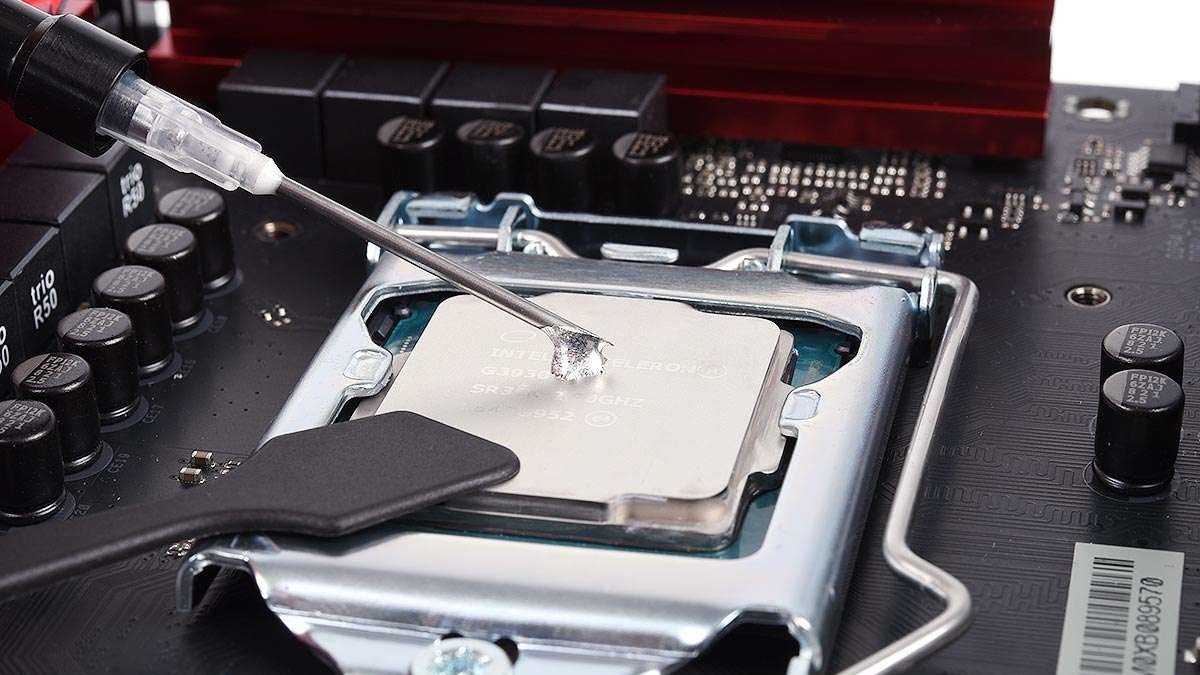
6. Alphacool Eisfrost Extreme
Specifications
Reasons to buy
Reasons to avoid
Alphacool’s Eisfrost Extreme was the best-performing liquid metal we’ve tested, outperforming competitors by a significant (for liquid metal) 0.5C degrees! If you’re looking for the best performance on the market, bar none, you’ll want to pick up Eisfrost Extreme.
Best Liquid Metal Thermal Paste (runner-up)
Best Liquid Metal Thermal Paste (Runner-up)
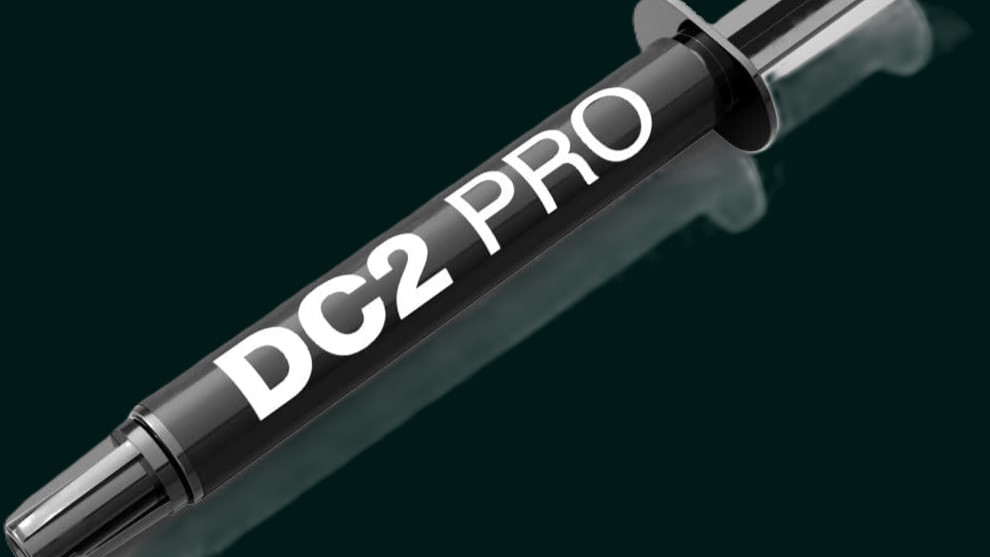
7. BeQuiet DC2 Pro
Specifications
Reasons to buy
Reasons to avoid
BeQuiet’s DC2 Pro is on par with Thermal Grizzly’s Conductonaut overall but is available for much less. As with all liquid metal compounds, extra care will be needed during installation due to electrical conductivity.
Thermal Paste Performance Rankings
Here's a breakdown of our recent testing, and we'll be adding new pastes to this list over the coming weeks and months. A bit further down, you'll find our original rounds of testing with 85 different pastes tested in 2017 and 90 pastes tested in 2022, some of which we've revisited in this new performance hierarchy. That should give you a good idea of how other pastes that we haven't retested yet would compare to the newer pastes.
We'll go into our breakdown of how we test these thermal pastes below, but the key takeaway here is that a single thermal compound can perform differently based on several variables, such as what type of cooler and mount you use. To cover all the bases, we've tested every thermal paste in a traditional air cooling system as well as a liquid cooling system. Below you'll find the temperatures we measured on our standardized test bench, and as always, lower temperatures are better. We've also included value charts in the album below as well.
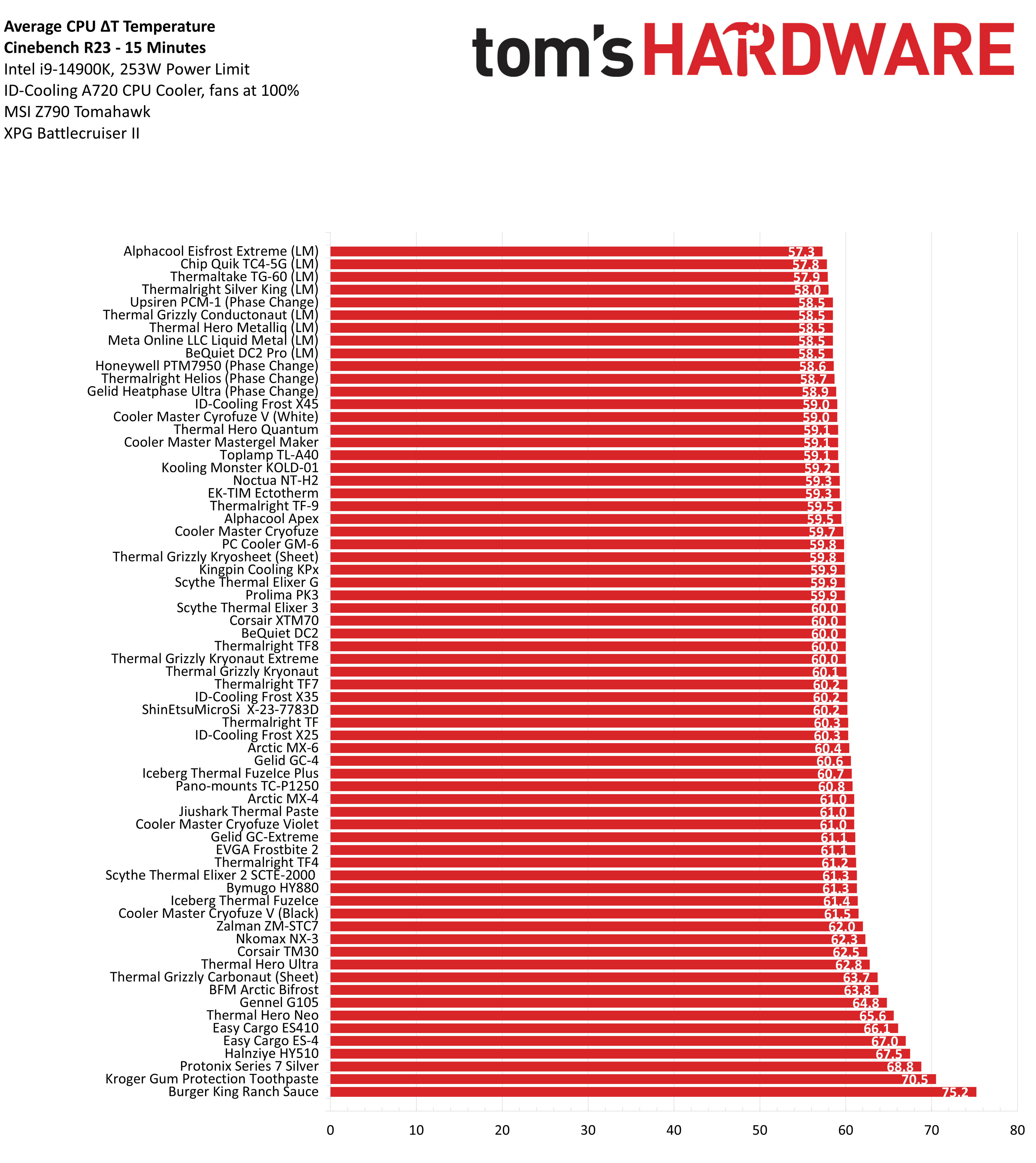
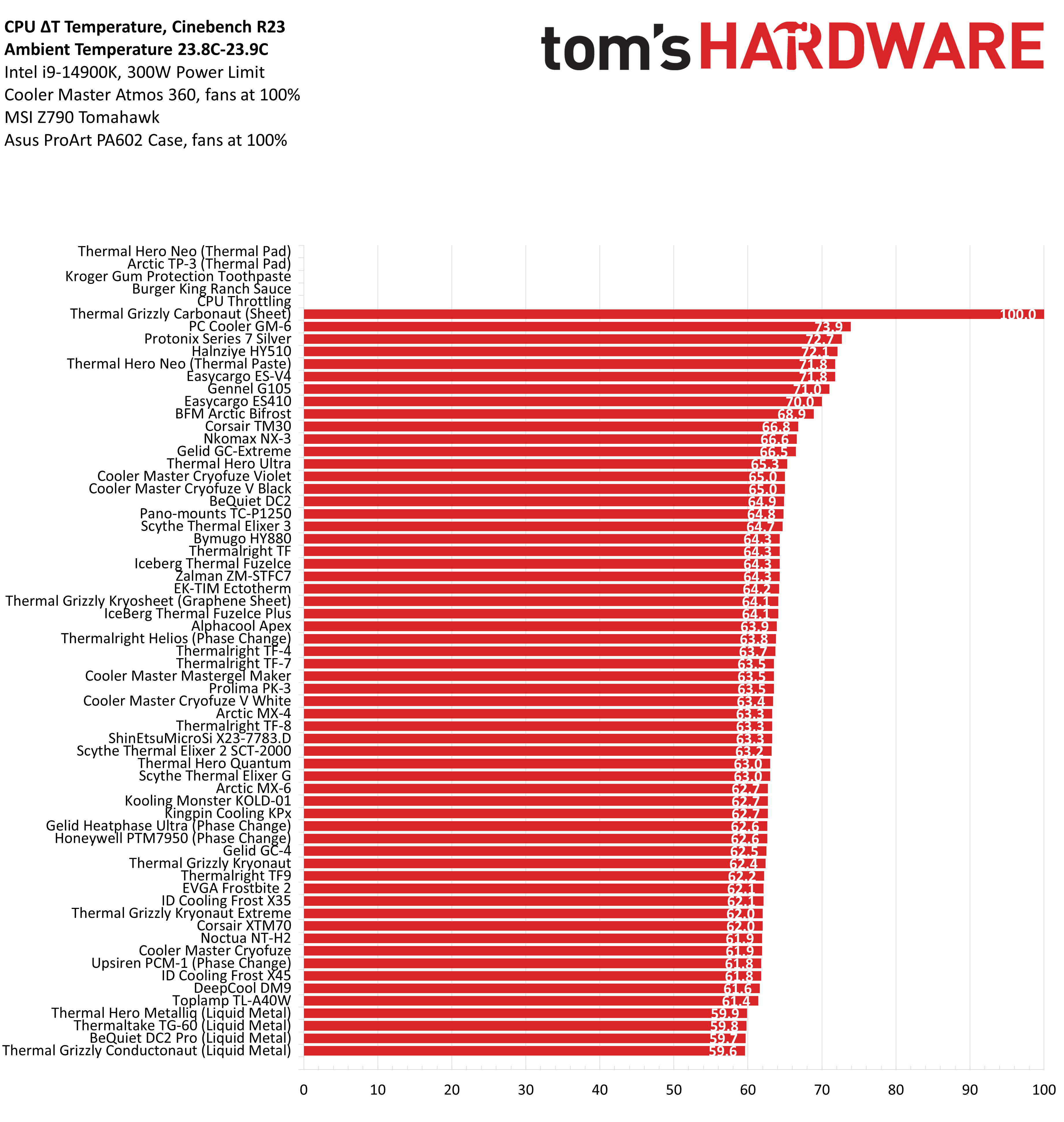
Thermal Paste Test Results
● Air Cooling
We used ID-Cooling’s A720 air cooler for our air cooling setup, as it is one of the best three air coolers we’ve tested thus far.
We tested a few traditional thermal pads, but thus far, all have failed testing on both air and liquid cooling systems with the power limits that we’ve used for testing. To better demonstrate the performance of these pads, we’ll show a different metric for these types of materials. Our next update will have many more thermal pads tested and will include a new chart to better demonstrate the performance of traditional thermal pads.
Liquid metal compounds top the temperature chart with slightly cooler values than traditional pastes, but not by much. All of the phase change compounds we tested performed only 0.1C behind liquid metals, making them a much more attractive choice due to their lack of electrical conductivity.
When we examined the cost of each compound, we were surprised to find that the best traditional paste tested was also very affordable—Toplamp’s TL-A140 was currently available for only $6.99 on Amazon at the time of this publication.
Based on the results from our testing, we’d recommend Toplamp’s TL-A140 for most users. If you want the absolute best thermal performance, don’t bother with the risk of liquid metal for an air cooling setup and use a phase change compound like Honeywell PTM7950 or Thermalright Helios.
● All In One (AIO) Liquid Cooler
We used Cooler Master’s Atmos 360 AIO to test thermal compounds on an AIO liquid cooling system.
Liquid metals once again perform best with an AIO but with a larger performance improvement than paste in our air cooling results. However, the performance gained is still rather small compared to traditional compounds. If you want to take full advantage of the performance liquid metal can offer, you’ll need to delid your CPU. However, we don't recommend that for all but the most extreme users who are willing to potentially sacrifice their chip to eke out the last few percentage points of performance — proceed at your own risk.
Just as with our air cooling results, Toplamp’s AL-140 is the best-performing traditional thermal paste. With its budget price tag of $6.99, it shows that you don’t need to spend a lot of money for top-tier performance.
We tested a few phase change compounds on our liquid cooling setup, and they didn’t perform as well as they did on our air cooling setup. That’s not to say they performed poorly—their performance was on par with good thermal pastes, but with our air cooling results, they performed nearly as well as liquid metal.
There are a few possibilities to explain why phase change compounds did not perform as well on our liquid cooling system. The most likely of these is the mounting used with Cooler Master’s Atmos 360. I’ll need to test phase change compounds with other liquid coolers to say for sure, and I may investigate this further in the future.
● Key Takeaways
Thermal compounds might always be compared and debated over, but the simple fact remains: PC system building needs thermal compounds to effectively dissipate thermal loads. Without them, our beloved gaming and content-producing machines would struggle to keep components cool during heated frag sessions, heavy workstation computations, or just simply browsing the web.
Not every system will need the most expensive compound, so even the most budget-minded system builders can rest easy knowing that even lower-cost pastes can still prove very effective. For most users, we recommend Toplamp’s AL-140 because it is one of the best pastes we’ve tested and is cheap at only $6.99 USD. You can see our historical testing results with far more pastes after the test setup.
Test System Configuration and Testing Methods
CPU | Intel i9-14900K |
Motherboard | MSI Z790 Tomahawk Max WiFi |
Cooling | Cooler Master Atmos 360 (AIO Cooling) ID-Cooling A720 (Air Cooling) |
Chassis | XPG Battlecruiser II (Air Cooling) BeQuiet! Dark Base Pro 901 (AIO Cooling) |
Fan Control | PWM at 100% |
For our thermal compound tests, I used the same hardware and configuration for each test to minimize environment variables. Some of these components were sampled by vendors, without whom this testing wouldn’t have been possible. Intel sampled two Raptor Lake i9-14900K CPUs, and MSI sampled two of its latest Z790 Tomahawk Max WiFi motherboards for this testing.
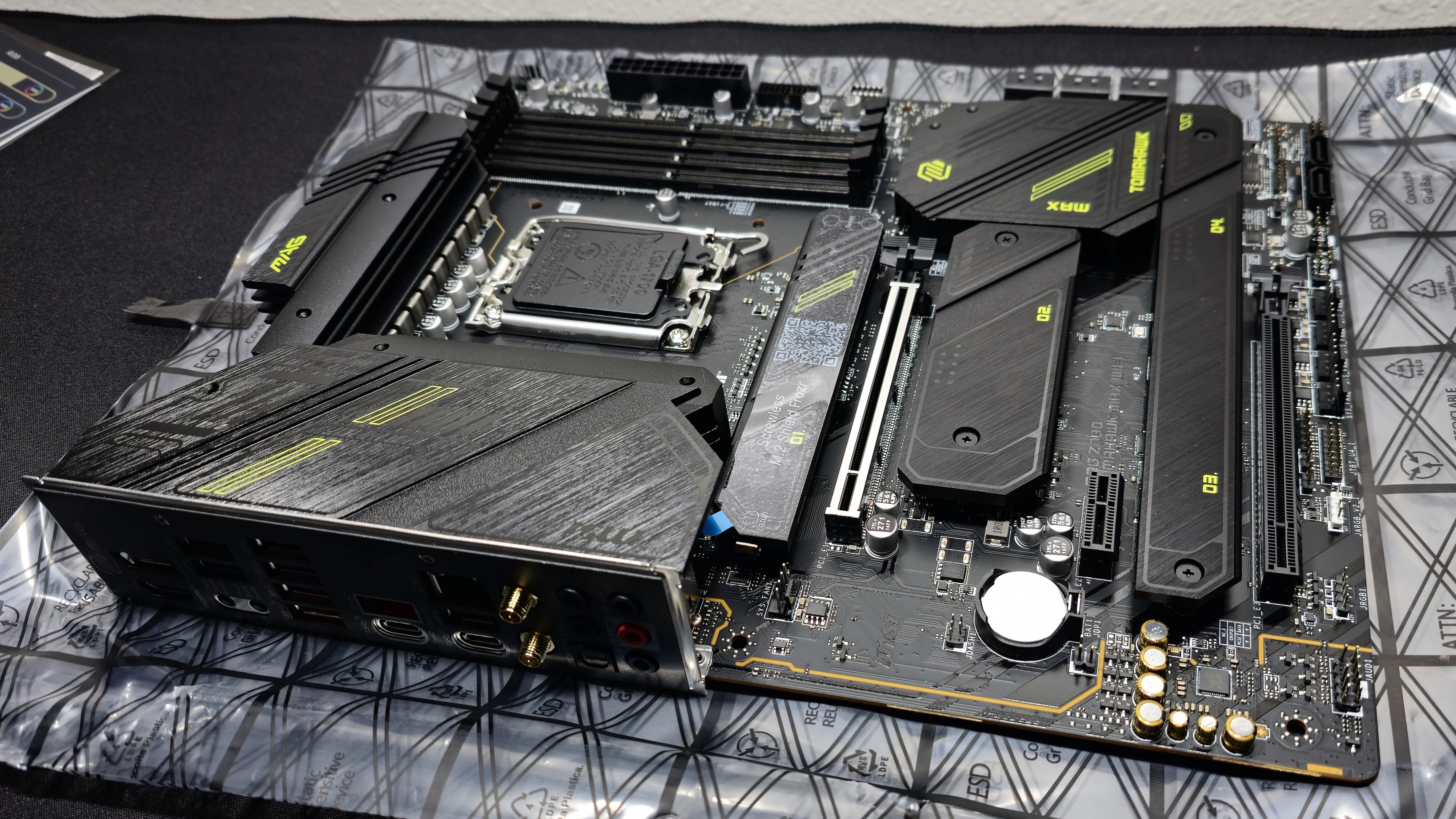
I’ve tested each thermal paste in two systems, one with an air cooler and one with an AIO liquid cooler. For the air cooling system, I used ID-Cooling’s Frozen A720 Black, which is one of the two best air coolers that I’ve tested on any CPU. For the liquid cooling system, we’ve used Cooler Master’s Atmos 360 AIO. Each system has 32GB (2x 16GB) of DDR5 and MSI’s Z790 Tomahawk Maxi WiFi motherboard.
Each compound is properly burned in before testing, with a burn-in period appropriate to the compound being tested. Most paste applications are burned in with 30 minutes of Cinebench R23 Multi-core testing, split between two 15-minute tests with a cool-down period afterward. There are some exceptions to this rule. With phase change materials like Honeywell’s PTM7950, I ran Cinebench for four 30-minute tests with cool-down periods in between. With Liquid Metal (LM) materials, only a single burn-in test for 15 minutes was needed as LM doesn’t really require a burn-in period at all.
To test each thermal compound, I ran Cinebench R23’s multi-core stress test for 15 minutes after each compound had been burned in. This is a long enough thermal load that most pastes will reach their maximum temperature by the end of the benchmark. I measured the average temperature of the CPU during testing to demonstrate the effectiveness of a thermal compound.
The reason the average temperature is used instead of the peak temperature is consistency: I observed more variation with peak temperature results than I was comfortable with, but the average temperature results recorded were very consistent.
Excluding results that were thrown out and retested with a different tube of thermal paste, most results had a variance of no more than 0.2C, with a few having as much as 0.3C. In theory, I’d prefer to reduce that variance to 0.1C or less - but there’s only so much one can do to eliminate variance without having an expensive custom testing lab.
There are a lot of factors that can impact the performance of a paste. How you apply Thermal Paste and mount your cooler are the two biggest factors, but there can also be variations in the quality of different tubes of the same brand and model of thermal paste. We have retested results to ensure accuracy, but we can’t account for all potential variances in product quality. That said, if testing results from one tube were worse than expected, another tube was obtained.
The power limits on each system are different and have been chosen to reflect the capabilities of the cooler. For the air cooling system, we used the Intel standard 253W power limit and tested it with an ambient temperature of 22.8 degrees C. With the liquid cooling system, we’ve raised the power limit to 300W and increased the ambient temperature to 23.8 degrees C.
Legacy Thermal Paste Testing - 90 Pastes Tested
Here's our legacy thermal paste testing chart that we generated back in 2022. As you'll notice, many of the same popular pastes in 2022 are still on the market, making it into our new round of 2024 testing.
We do have new testing equipment for our updated tests, such as a more modern CPU, motherboard, and coolers for our tests - and we use a different stress test. That means these tests are not quite comparable to our legacy results.
We'll be adding more thermal pastes to our new hierarchy; stay tuned.
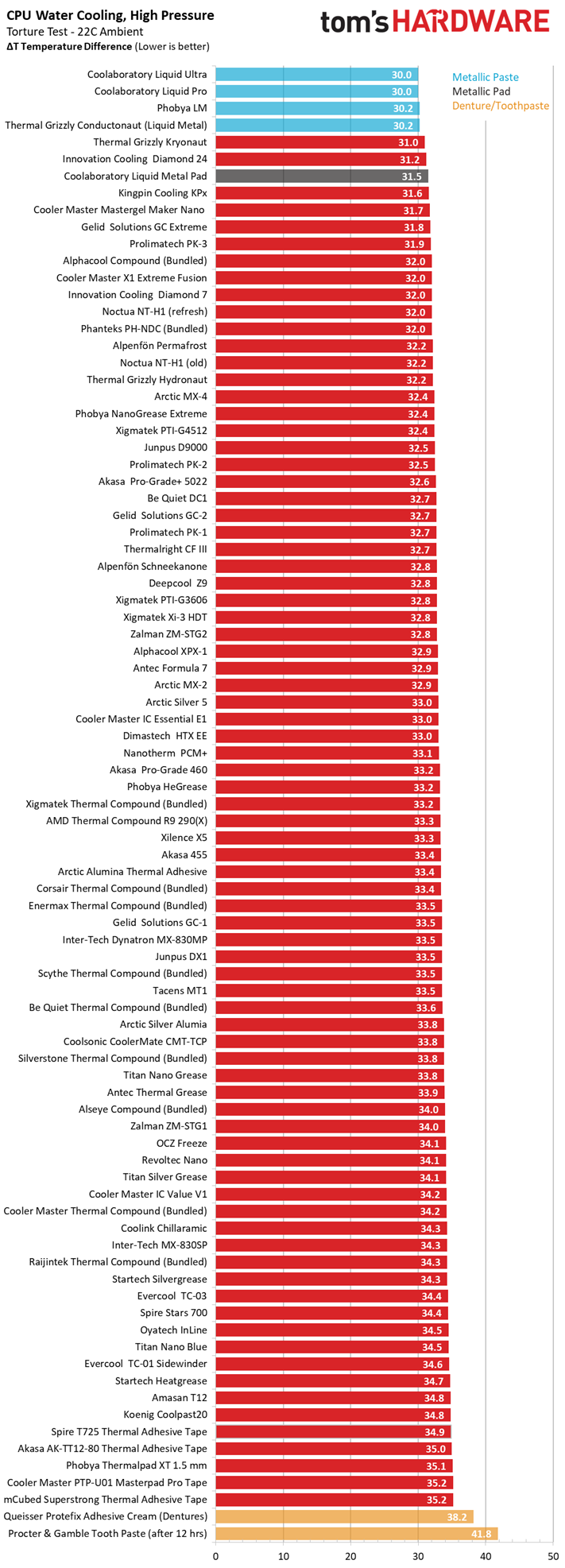
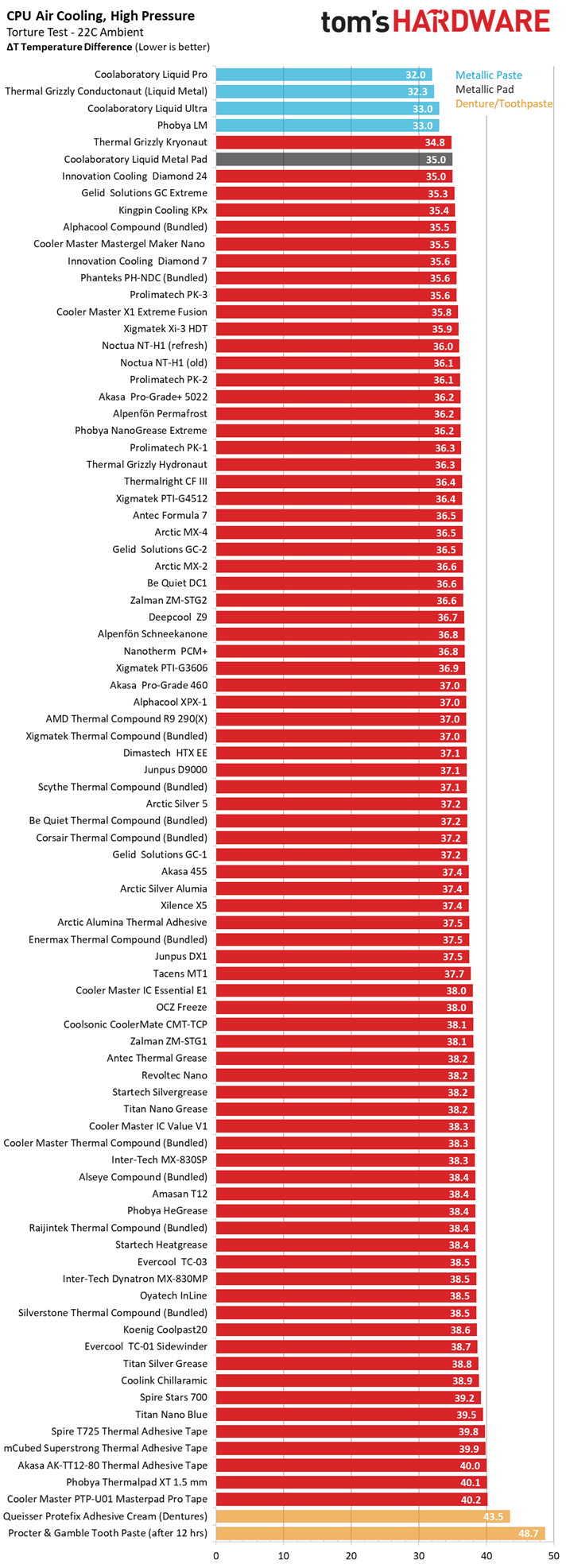
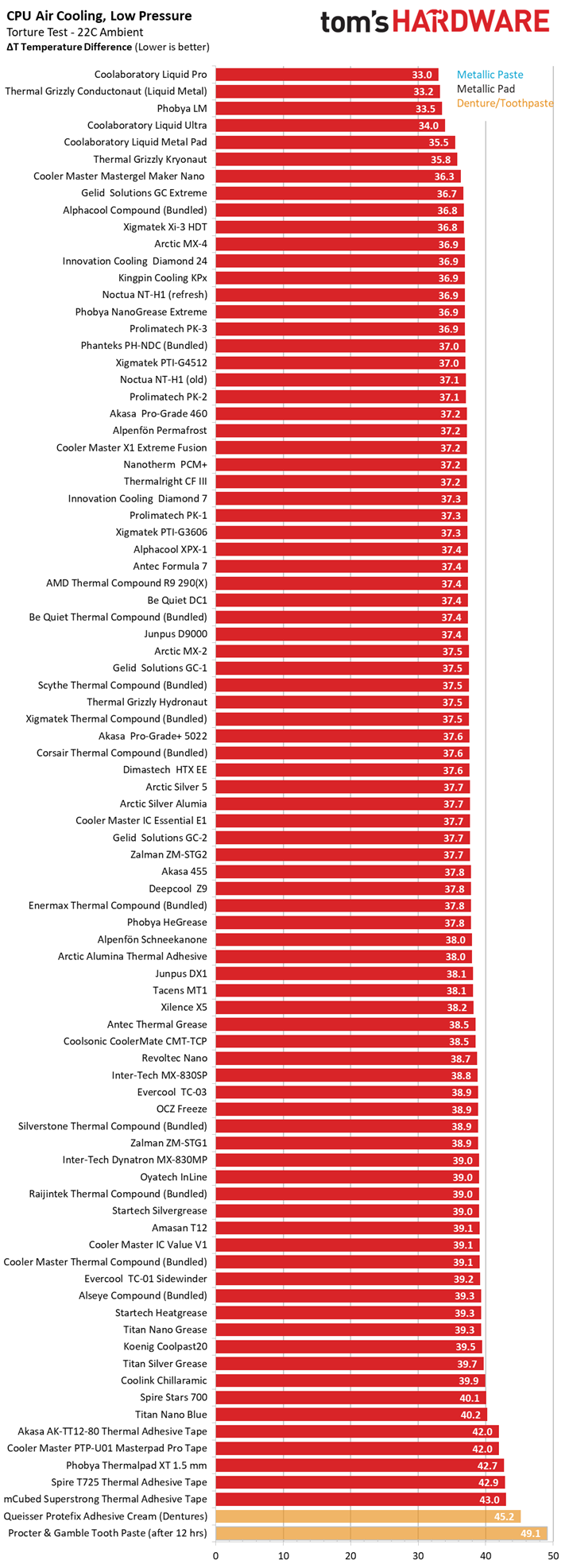
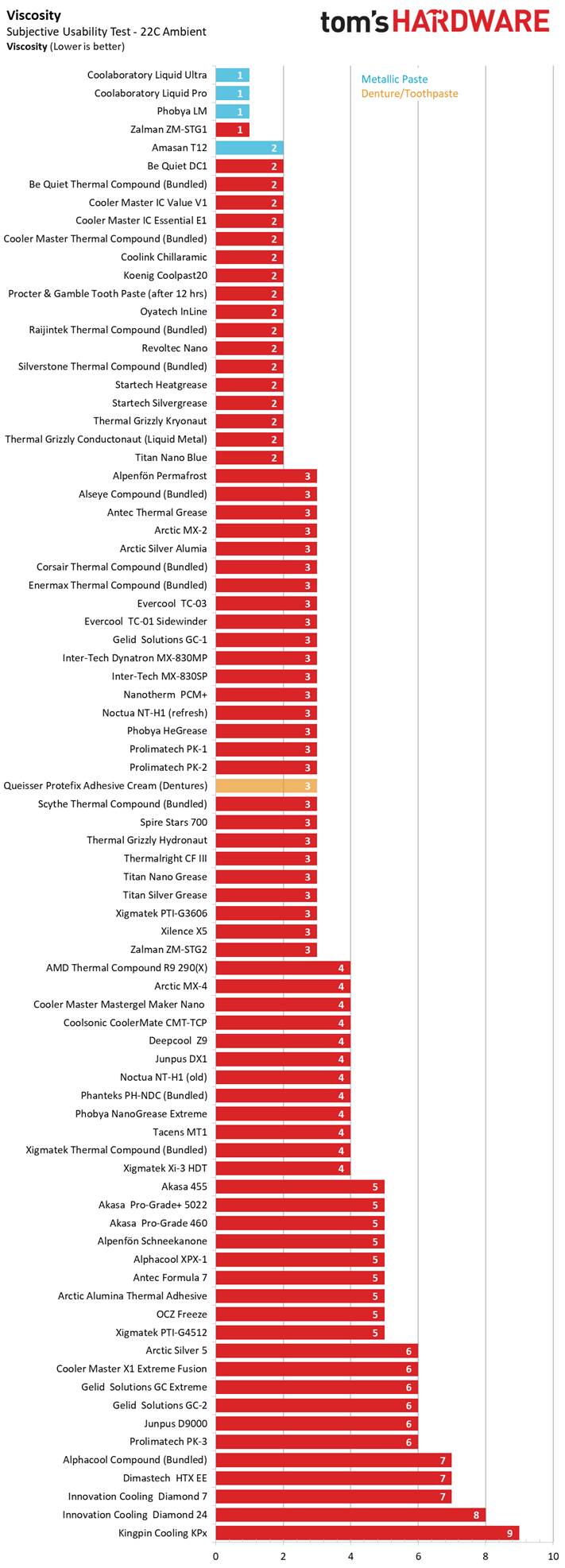
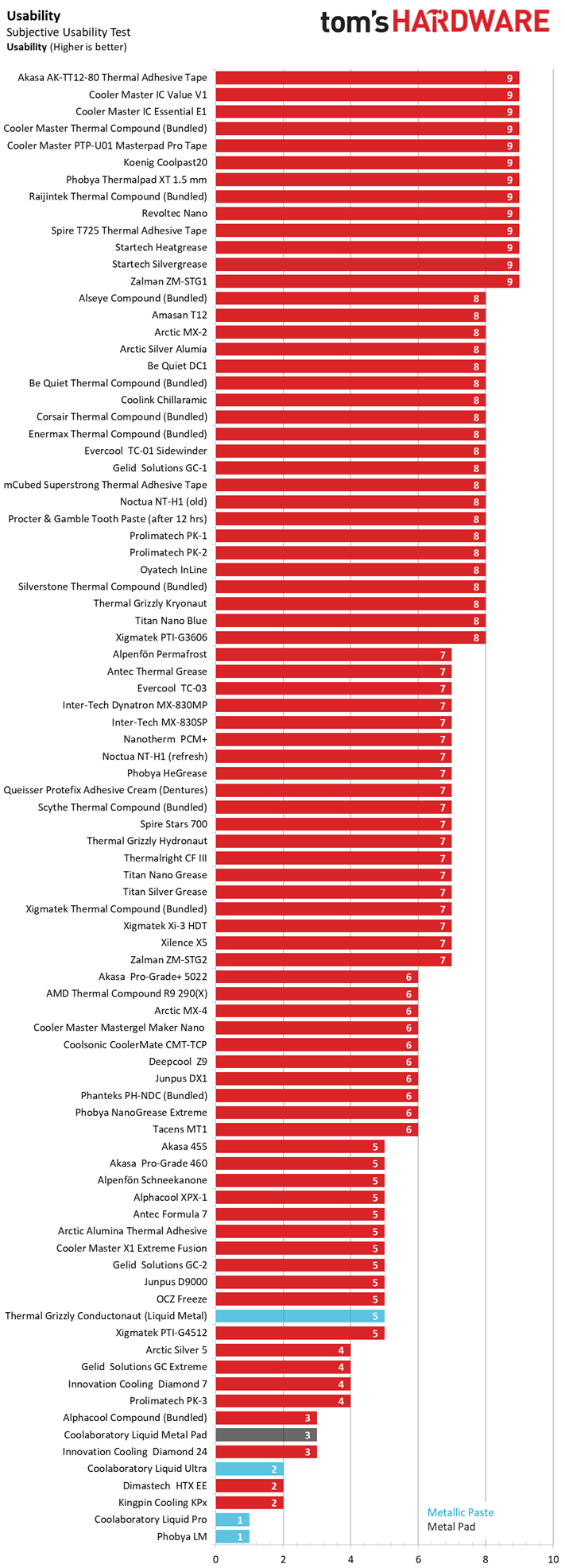
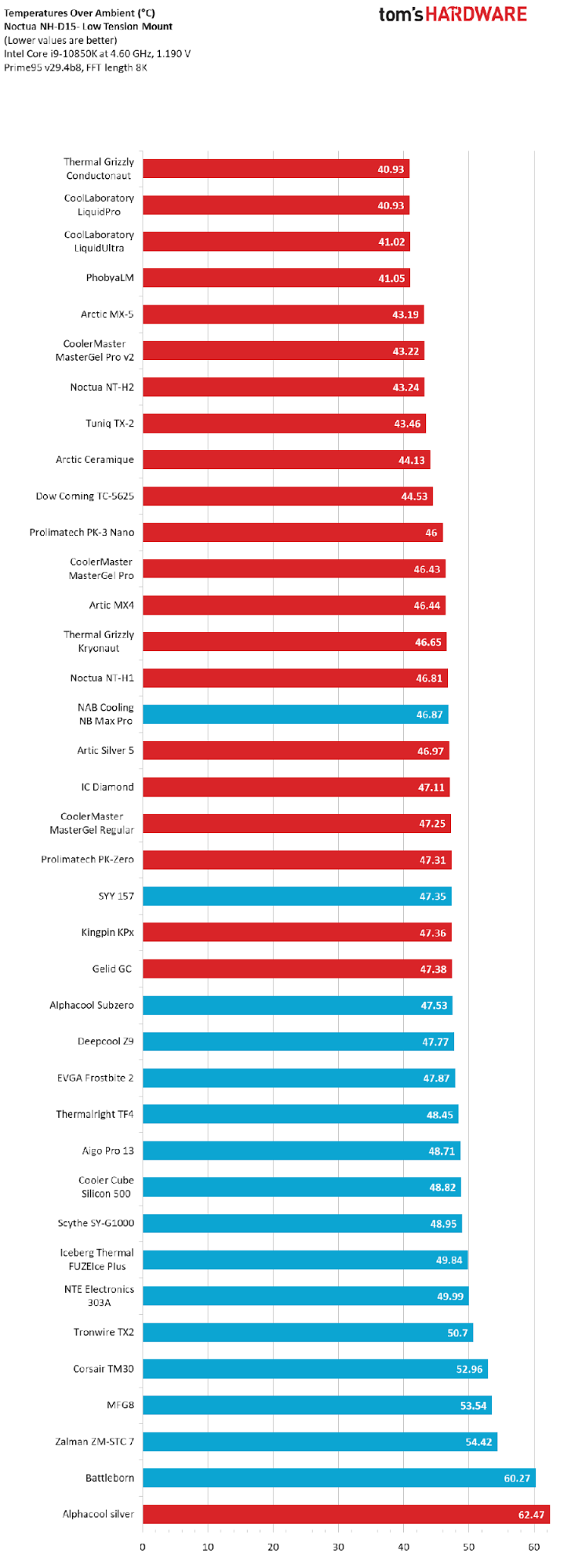
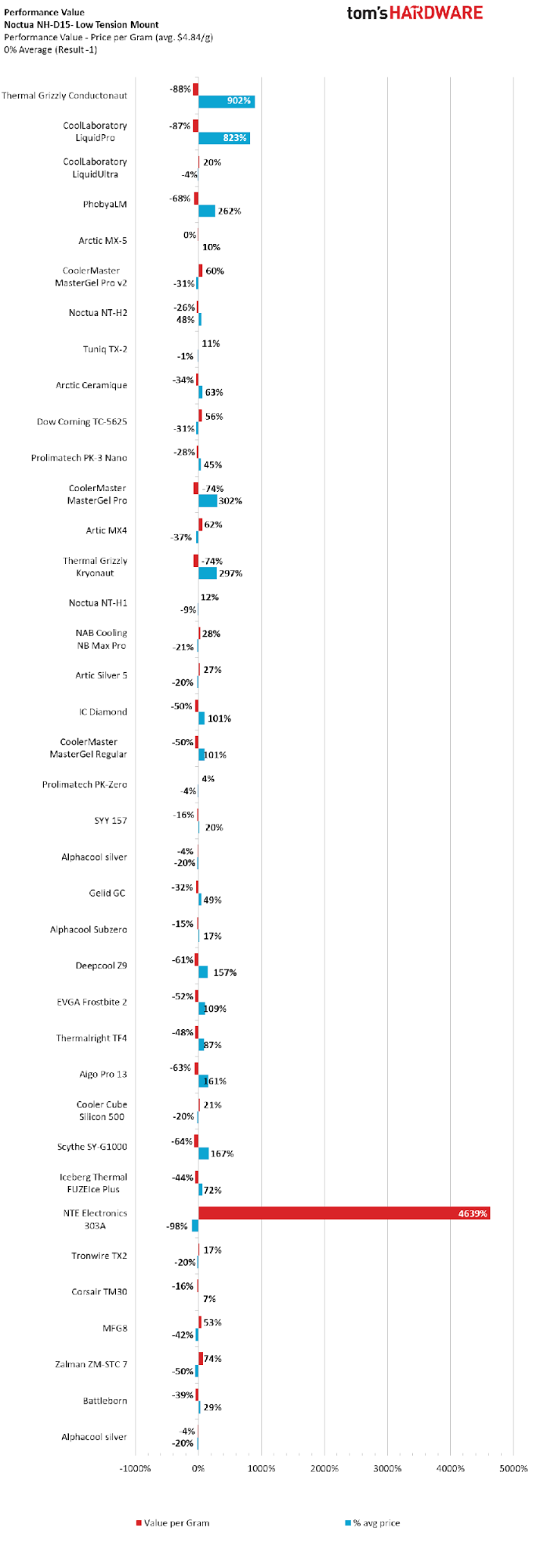
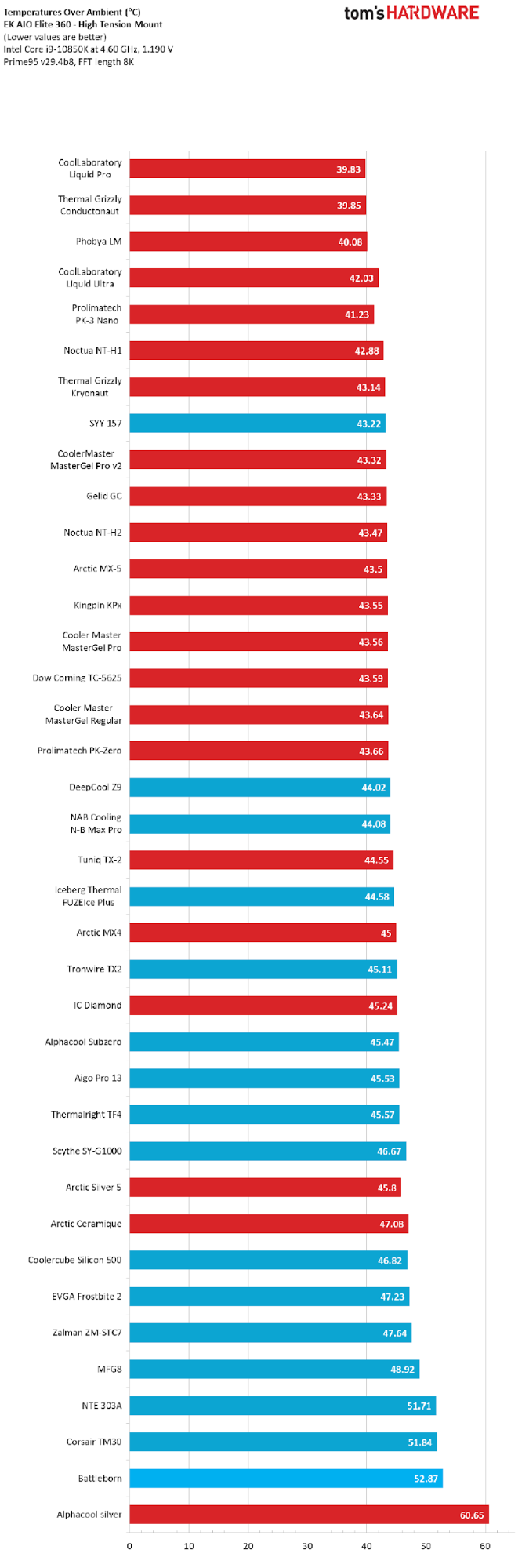
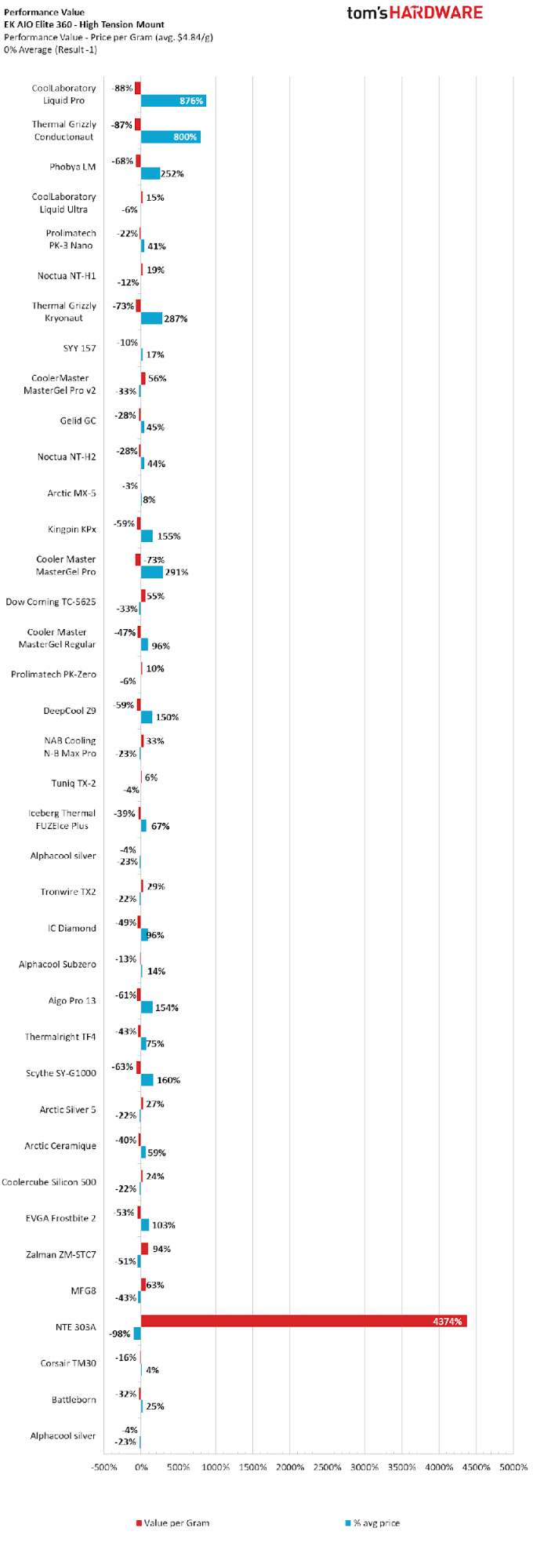
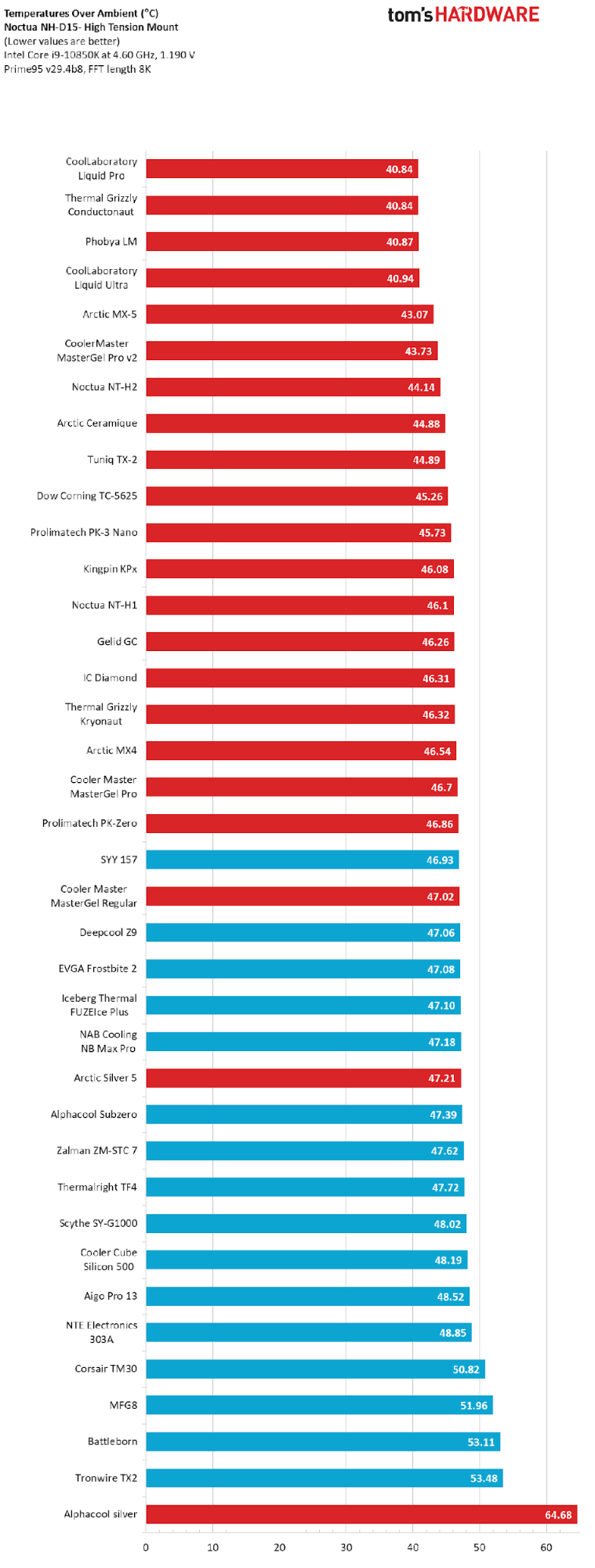
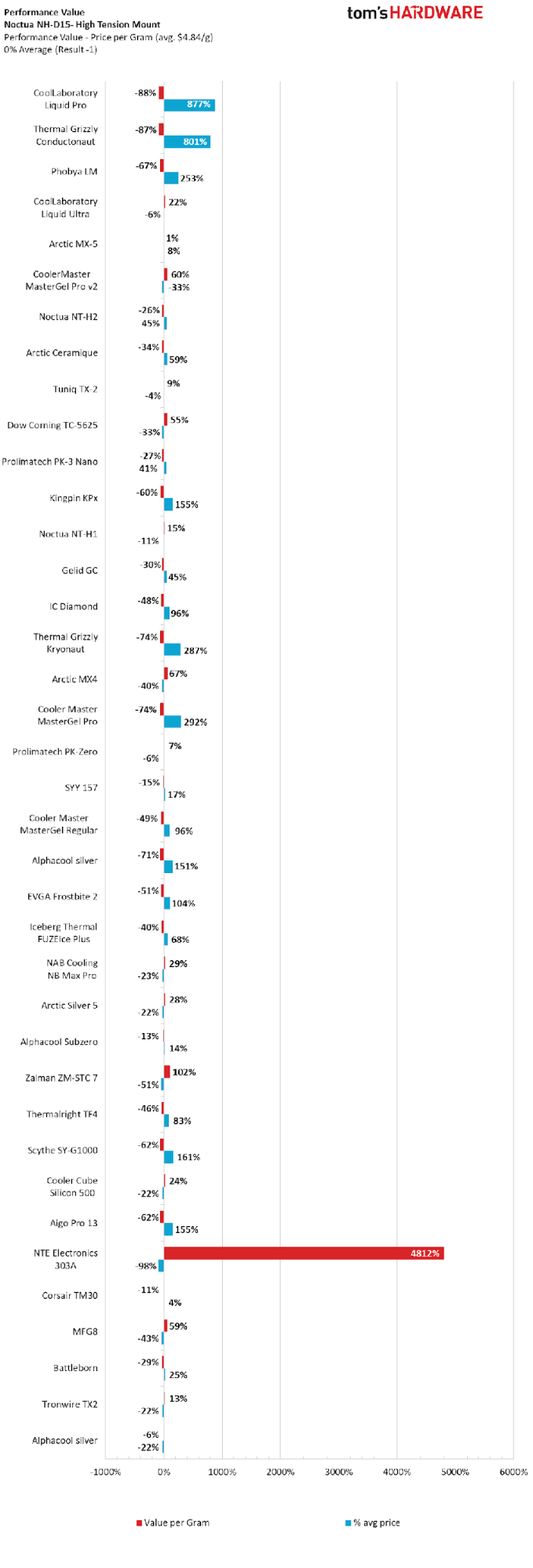
Stay On the Cutting Edge: Get the Tom's Hardware Newsletter
Get Tom's Hardware's best news and in-depth reviews, straight to your inbox.

Paul Alcorn is the Managing Editor: News and Emerging Tech for Tom's Hardware US. He also writes news and reviews on CPUs, storage, and enterprise hardware.
- Albert ThomasFreelancer, CPU Cooling Reviewer
- Garrett CarverCPU Cooling Reviewer
-
Phaaze88 Dang, this is nice.Reply
The results for gpu applications would be different though, as the more viscous pastes would have an edge here - at least from what I've read so far. -
rubix_1011 Yep, I agree, but the thinking being GPU thermal paste updates are a bit more specific and not necessarily as user-friendly as CPU cooling applications, so we will likely be focusing on them as a standalone article with some reference back here. But yes, I would like to get something like that in the near future.Reply -
Glock24 Wow, how's things have improved! I've used MX-4 for like the last decade. Good to know there's something better and not overly expensive.Reply -
CompuTronix As usual, great review, Garrott, and very thorough. I can appreciate how tedious and time consuming that work can be, as well as the research, patience and attention to detail that's required. I posted a link to your review in the Intel CPU Temperature Guide 2021.Reply
CT :sol: -
BogdanH I appreciate the work that has been put into this test, where one can see comparison for most known products.Reply
It's interesting to see, that between (popular) similar priced thermal pastes , there's quite a difference in performance. Here I would say, the difference of 2°C (and bigger) is important enough to influence our decision.
What surprised me is, performance difference between metal and "normal" pastes is quite small -considering big "listed" conductivity differences. And that shows how important such tests are. -
sstanic Nice comparison, thanks. Hovewer I would like to see Noctua's H2 paste from 2019 in the comparison, instead of the H1 from 2007. Hopefully that can still be added?Reply -
Rdslw I have a comment, NT-H1 was slightly shorter lived paste than others, at least in my testing in laptops mx4's laptop started to show thermal issues (system throttles, palm rest is getting hot) similar to default paste after ~1.5y whole MX holds without noticeable changes for at least 3years now.Reply
It was possibly old NT-H1, I am not sure when it was changed or what I had.
I de-dusted this 3 times in the meantime, so it's not a dust clog effect, and fresh paste made it again into a comfortable palm rest. -
rubix_1011 There will be additional pastes added to this list as we go, so feel free to leave suggestions here in the comments - I'm reading them and planning for the next round as we speak.Reply